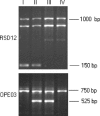Candida guilliermondii fungemia in patients with hematologic malignancies
- PMID: 16825364
- PMCID: PMC1489483
- DOI: 10.1128/JCM.00356-06
Candida guilliermondii fungemia in patients with hematologic malignancies
Abstract
The microbiological, clinical, and epidemiological features of most non-Candida albicans Candida species are well known, but much less is known about species such as Candida guilliermondii, an uncommon pathogen causing a variety of deep-seated infections in immunocompromised hosts. To characterize C. guilliermondii fungemia in patients with hematological malignancies and its susceptibility to antifungal drugs, all cases of C. guilliermondii fungemia diagnosed in our department between 1983 and 2005 were retrospectively analyzed and the literature was reviewed. C. guilliermondii caused 29/243 (11.7%) candidemia episodes diagnosed during the study period. Central venous catheters were the documented sources of candidemia in 19/29 episodes (65.5%), and invasive tissue infections were documented in 2 (6.9%). In the remaining eight, the catheter was not removed and the source of the fungemia remained obscure. Seven episodes ended in death, but only one could be attributed to invasive C. guilliermondii infection. Molecular typing data reveal no evidence of common infection sources. Isolates displayed high rates of in vitro susceptibility to amphotericin B (100%), voriconazole (95%), and fluconazole (90%) and lower rates of in vitro susceptibility to flucytosine (86%), itraconazole (76%), and caspofungin (33%). Our literature review confirms that C. guilliermondii is a significantly more frequent cause of candidemia among cancer patients compared with the general hospital population. It accounted for <1% of the total number of Candida bloodstream isolates reported in the articles we reviewed, with higher rates in Europe (1.4%) and Asia (1.8%) compared with North America (0.3%).
Figures


References
-
- Abi-Said, D., E. Anaissie, O. Uzun, I. Raad, H. Pinzcowski, and S. Vartivarian. 1997. The epidemiology of hematogenous candidiasis caused by different Candida species. Clin. Infect. Dis. 24:1122-1128. - PubMed
-
- Chen, Y. C., S. C. Chang, K. T. Luh, and W. C. Hsieh. 2003. Stable susceptibility of Candida blood isolates to fluconazole despite increasing use during the past 10 years. J. Antimicrob. Chemother. 52:71-77. - PubMed
-
- Cheng, M. F., K. W. Yu, R. B. Tang, Y. H. Fan, Y. L. Yang, K. S. Hsieh, M. Ho, and H. J. Lo. 2004. Distribution and antifungal susceptibility of Candida species causing candidemia from 1996 to 1999. Diagn. Microbiol. Infect. Dis. 48:33-37. - PubMed
MeSH terms
Substances
LinkOut - more resources
Full Text Sources
Other Literature Sources
Medical

